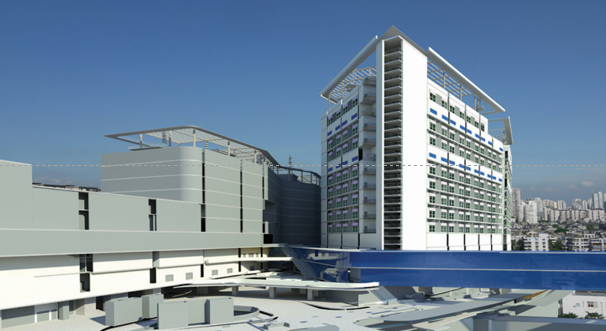Building Information Modeling (BIM) extends beyond 3D representations to incorporate additional dimensions that bring further depth to project planning and management. Specifically, 4D BIM integrates the dimension of time, while 5D BIM adds the dimension of cost. These extended dimensions provide enhanced capabilities for project visualization, scheduling, budgeting, and overall management.
4D BIM: Time Integration
4D BIM refers to the incorporation of the time element into 3D BIM models. It involves the integration of project schedules with the 3D model to create a time-based visual simulation of the construction process.
Key Components of 4D BIM
3D Model:
The foundation is a detailed 3D model of the project, including all physical components and structures.
Project Schedule:
A comprehensive timeline of construction activities, milestones, and sequences, often created using project management software such as Microsoft Project or Primavera P6.
Integration Tools:
Software that links the 3D model with the project schedule to create a 4D simulation. Common tools include Autodesk Navisworks, Synchro, and Bentley Synchro 4D.
Benefits of 4D BIM
Enhanced Visualization:
Provides a visual representation of the construction sequence, helping stakeholders understand the project timeline and stages.
Improved Planning and Coordination:
Allows for better coordination of trades and activities by visualizing the impact of changes in the schedule.
Conflict and Risk Management:
Identifies potential conflicts and risks early in the planning phase, allowing for proactive mitigation.
Resource Management:
Helps in planning resource allocation and logistics, ensuring that materials, equipment, and labor are available when needed.
Communication and Stakeholder Engagement:
Facilitates clearer communication with clients and stakeholders by providing an easily understandable visual timeline.
5D BIM: Cost Integration
5D BIM builds on 4D BIM by adding cost data to the 3D model and schedule. This integration allows for real-time cost estimation, budgeting, and financial planning throughout the project lifecycle.
Key Components of 5D BIM
4D BIM Model:
A time-linked 3D model that forms the basis for further cost integration.
Cost Data:
Detailed cost information related to materials, labor, equipment, and other expenses. This data is linked to specific elements of the 3D model and schedule.
Cost Management Tools:
Software that integrates cost data with the 4D BIM model. Common tools include Autodesk Revit, CostX, and Bentley ProjectWise.
Benefits of 5D BIM
Accurate Cost Estimation:
Provides real-time cost estimates based on the current state of the design and schedule, improving the accuracy of budget forecasts.
Budget Management:
Helps in tracking actual costs against budgeted costs throughout the project, facilitating better financial control.
Cost Analysis and Optimization:
Enables detailed analysis of cost implications of design changes, helping to optimize the project for cost efficiency.
Financial Planning and Forecasting:
Supports long-term financial planning by providing a clear view of projected costs over the project timeline.
Improved Decision-Making:
Enhances decision-making by providing comprehensive cost and schedule information, allowing for informed trade-offs between time and cost.
Implementation of 4D and 5D BIM
Develop a Detailed 3D Model:
Start with a robust 3D model that includes all relevant design details.
Integrate the Project Schedule:
Create a detailed project schedule and link it to the 3D model to develop the 4D BIM model.
Add Cost Data:
Incorporate detailed cost information into the 4D BIM model to create the 5D BIM model.
Use Integration Software:
Utilize specialized BIM software tools that support 4D and 5D functionalities to integrate and manage time and cost data.
Collaborate and Coordinate:
Ensure all stakeholders are involved in the process and have access to the 4D and 5D BIM models for better collaboration and coordination.
Monitor and Update:
Continuously monitor the models and update them as the project progresses to maintain accuracy and relevance.

